标签:
redis是一个key-value存储系统。和Memcached类似,它支持存储的value类型相对更多,包括string(字符串)、list(链表)、set(集合)、zset(sorted set --有序集合)和hash(哈希类型)。这些数据类型都支持push/pop、add/remove及取交集并集和差集及更丰富的操作,而且这些操作都是原子性的。在此基础上,redis支持各种不同方式的排序。与memcached一样,为了保证效率,数据都是缓存在内存中。区别的是redis会周期性的把更新的数据写入磁盘或者把修改操作写入追加的记录文件,并且在此基础上实现了master-slave(主从)同步。
一、Redis安装和基本使用
|
1
2
3
4
|
wget http://download.redis.io/releases/redis-3.0.6.tar.gztar xzf redis-3.0.6.tar.gzcd redis-3.0.6make |
启动服务端
|
1
|
src/redis-server |
启动客户端
|
1
2
3
4
5
|
src/redis-cliredis> set foo barOKredis> get foo"bar" |
二、Python操作Redis
|
1
2
3
4
5
6
7
|
sudo pip install redisorsudo easy_install redisor源码安装详见:https://github.com/WoLpH/redis-py |
API使用
redis-py 的API的使用可以分类为:
1、操作模式
redis-py提供两个类Redis和StrictRedis用于实现Redis的命令,StrictRedis用于实现大部分官方的命令,并使用官方的语法和命令,Redis是StrictRedis的子类,用于向后兼容旧版本的redis-py。
|
1
2
3
4
5
6
7
8
|
#!/usr/bin/env python# -*- coding:utf-8 -*-import redisr = redis.Redis(host=‘10.211.55.4‘, port=6379)r.set(‘foo‘, ‘Bar‘)print r.get(‘foo‘) |
2、连接池
redis-py使用connection pool来管理对一个redis server的所有连接,避免每次建立、释放连接的开销。默认,每个Redis实例都会维护一个自己的连接池。可以直接建立一个连接池,然后作为参数Redis,这样就可以实现多个Redis实例共享一个连接池。
|
1
2
3
4
5
6
7
8
9
10
|
#!/usr/bin/env python# -*- coding:utf-8 -*-import redispool = redis.ConnectionPool(host=‘10.211.55.4‘, port=6379)r = redis.Redis(connection_pool=pool)r.set(‘foo‘, ‘Bar‘)print r.get(‘foo‘) |
3、操作
String操作,redis中的String在在内存中按照一个name对应一个value来存储。如图:
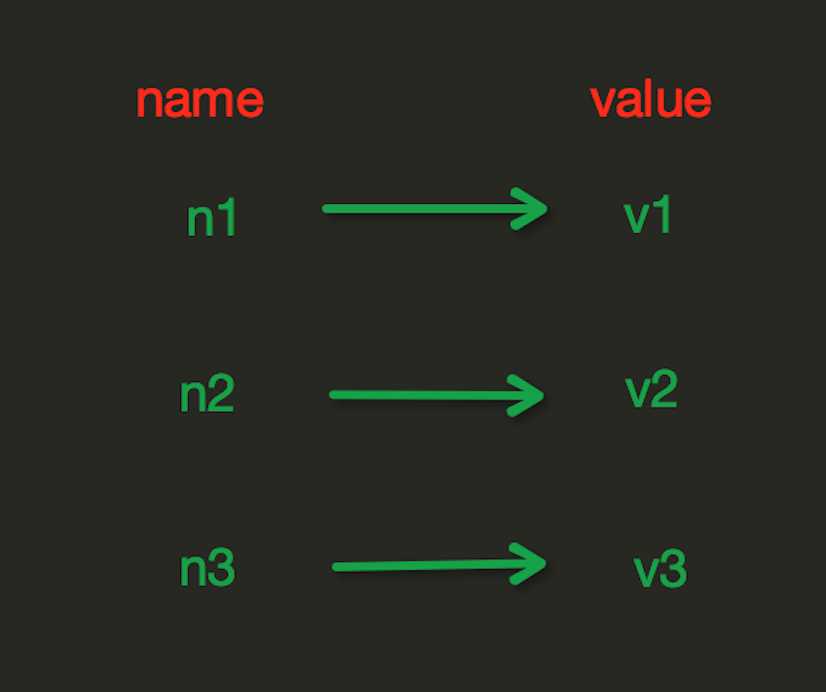
set(name, value, ex=None, px=None, nx=False, xx=False)
在Redis中设置值,默认,不存在则创建,存在则修改参数:ex,过期时间(秒)px,过期时间(毫秒)nx,如果设置为True,则只有name不存在时,当前set操作才执行xx,如果设置为True,则只有name存在时,岗前set操作才执行setnx(name, value)
设置值,只有name不存在时,执行设置操作(添加)setex(name, value, time)
# 设置值# 参数:# time,过期时间(数字秒 或 timedelta对象)psetex(name, time_ms, value)
# 设置值# 参数:# time_ms,过期时间(数字毫秒 或 timedelta对象)mset(*args, **kwargs)
批量设置值如:mset(k1=‘v1‘, k2=‘v2‘)或mget({‘k1‘:‘v1‘,‘k2‘:‘v2‘})get(name)
获取值mget(keys, *args)
批量获取如:mget(‘ylr‘,‘wupeiqi‘)或r.mget([‘ylr‘,‘wupeiqi‘])getset(name, value)
设置新值并获取原来的值getrange(key, start, end)
# 获取子序列(根据字节获取,非字符)# 参数:# name,Redis 的 name# start,起始位置(字节)# end,结束位置(字节)# 如: "武沛齐" ,0-3表示 "武"setrange(name, offset, value)
# 修改字符串内容,从指定字符串索引开始向后替换(新值太长时,则向后添加)# 参数:# offset,字符串的索引,字节(一个汉字三个字节)# value,要设置的值setbit(name, offset, value)
# 对name对应值的二进制表示的位进行操作# 参数:# name,redis的name# offset,位的索引(将值变换成二进制后再进行索引)# value,值只能是 1 或 0# 注:如果在Redis中有一个对应: n1 = "foo",那么字符串foo的二进制表示为:011001100110111101101111所以,如果执行 setbit(‘n1‘,7,1),则就会将第7位设置为1,那么最终二进制则变成011001110110111101101111,即:"goo"# 扩展,转换二进制表示:# source = "武沛齐"source="foo"foriinsource:num=ord(i)bin(num).replace(‘b‘,‘‘)特别的,如果source是汉字"武沛齐"怎么办?答:对于utf-8,每一个汉字占3个字节,那么"武沛齐"则有9个字节对于汉字,for循环时候会按照 字节 迭代,那么在迭代时,将每一个字节转换 十进制数,然后再将十进制数转换成二进制111001101010110110100110111001101011001010011011111010011011110110010000------------------------------------------------------------------------------------武 沛 齐getbit(name, offset)
# 获取name对应的值的二进制表示中的某位的值 (0或1)bitcount(key, start=None, end=None)
# 获取name对应的值的二进制表示中 1 的个数# 参数:# key,Redis的name# start,位起始位置# end,位结束位置bitop(operation, dest, *keys)
# 获取多个值,并将值做位运算,将最后的结果保存至新的name对应的值# 参数:# operation,AND(并) 、 OR(或) 、 NOT(非) 、 XOR(异或)# dest, 新的Redis的name# *keys,要查找的Redis的name# 如:bitop("AND",‘new_name‘,‘n1‘,‘n2‘,‘n3‘)# 获取Redis中n1,n2,n3对应的值,然后讲所有的值做位运算(求并集),然后将结果保存 new_name 对应的值中strlen(name)
# 返回name对应值的字节长度(一个汉字3个字节)incr(self, name, amount=1)
# 自增 name对应的值,当name不存在时,则创建name=amount,否则,则自增。# 参数:# name,Redis的name# amount,自增数(必须是整数)# 注:同incrbyincrbyfloat(self, name, amount=1.0)
# 自增 name对应的值,当name不存在时,则创建name=amount,否则,则自增。# 参数:# name,Redis的name# amount,自增数(浮点型)decr(self, name, amount=1)
# 自减 name对应的值,当name不存在时,则创建name=amount,否则,则自减。# 参数:# name,Redis的name# amount,自减数(整数)append(key, value)
# 在redis name对应的值后面追加内容# 参数:key, redis的namevalue, 要追加的字符串
Hash操作,redis中Hash在内存中的存储格式如下图:
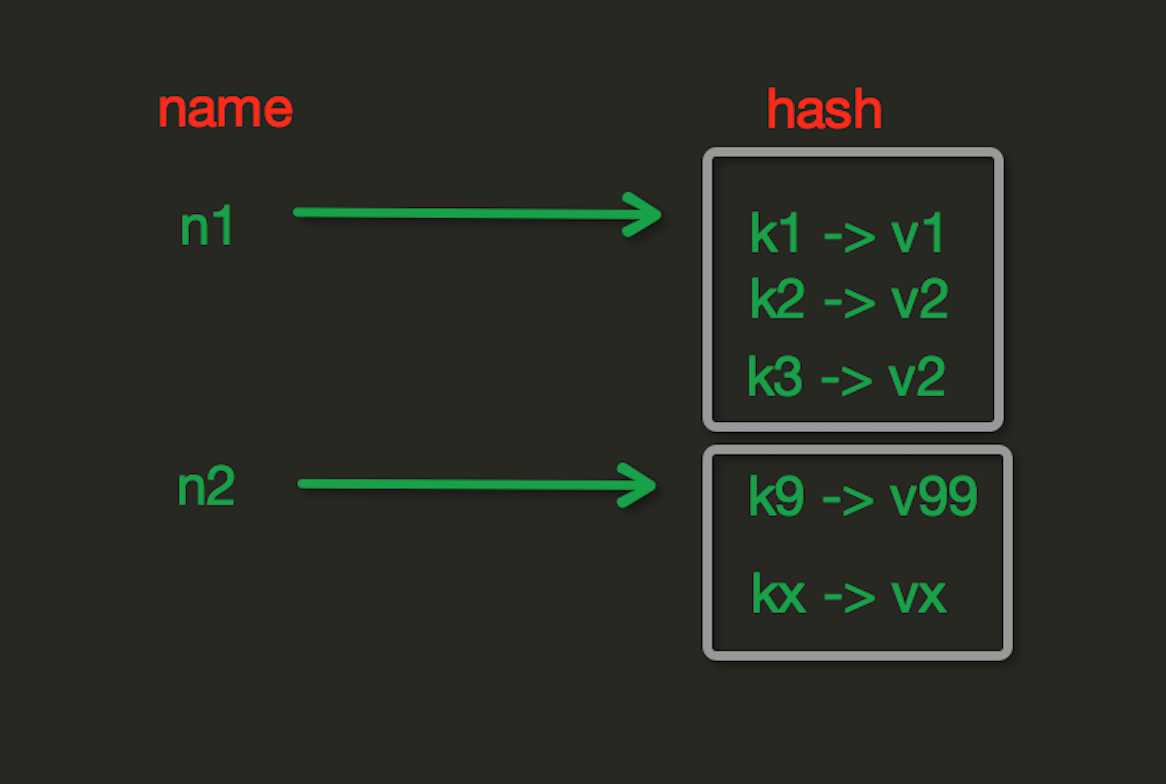
hset(name, key, value)
# name对应的hash中设置一个键值对(不存在,则创建;否则,修改)# 参数:# name,redis的name# key,name对应的hash中的key# value,name对应的hash中的value# 注:# hsetnx(name, key, value),当name对应的hash中不存在当前key时则创建(相当于添加)hmset(name, mapping)
# 在name对应的hash中批量设置键值对# 参数:# name,redis的name# mapping,字典,如:{‘k1‘:‘v1‘, ‘k2‘: ‘v2‘}# 如:# r.hmset(‘xx‘, {‘k1‘:‘v1‘, ‘k2‘: ‘v2‘})hget(name,key)
# 在name对应的hash中获取根据key获取valuehmget(name, keys, *args)
# 在name对应的hash中获取多个key的值# 参数:# name,reids对应的name# keys,要获取key集合,如:[‘k1‘, ‘k2‘, ‘k3‘]# *args,要获取的key,如:k1,k2,k3# 如:# r.mget(‘xx‘, [‘k1‘, ‘k2‘])# 或# print r.hmget(‘xx‘, ‘k1‘, ‘k2‘)hgetall(name)
获取name对应hash的所有键值hlen(name)
# 获取name对应的hash中键值对的个数hkeys(name)
# 获取name对应的hash中所有的key的值hvals(name)
# 获取name对应的hash中所有的value的值hexists(name, key)
# 检查name对应的hash是否存在当前传入的keyhdel(name,*keys)
# 将name对应的hash中指定key的键值对删除hincrby(name, key, amount=1)
# 自增name对应的hash中的指定key的值,不存在则创建key=amount# 参数:# name,redis中的name# key, hash对应的key# amount,自增数(整数)hincrbyfloat(name, key, amount=1.0)
# 自增name对应的hash中的指定key的值,不存在则创建key=amount# 参数:# name,redis中的name# key, hash对应的key# amount,自增数(浮点数)# 自增name对应的hash中的指定key的值,不存在则创建key=amounthscan(name, cursor=0, match=None, count=None)
# 增量式迭代获取,对于数据大的数据非常有用,hscan可以实现分片的获取数据,并非一次性将数据全部获取完,从而放置内存被撑爆# 参数:# name,redis的name# cursor,游标(基于游标分批取获取数据)# match,匹配指定key,默认None 表示所有的key# count,每次分片最少获取个数,默认None表示采用Redis的默认分片个数# 如:# 第一次:cursor1, data1 = r.hscan(‘xx‘, cursor=0, match=None, count=None)# 第二次:cursor2, data1 = r.hscan(‘xx‘, cursor=cursor1, match=None, count=None)# ...# 直到返回值cursor的值为0时,表示数据已经通过分片获取完毕hscan_iter(name, match=None, count=None)
# 利用yield封装hscan创建生成器,实现分批去redis中获取数据# 参数:# match,匹配指定key,默认None 表示所有的key# count,每次分片最少获取个数,默认None表示采用Redis的默认分片个数# 如:# for item in r.hscan_iter(‘xx‘):# print item
List操作,redis中的List在在内存中按照一个name对应一个List来存储。如图:
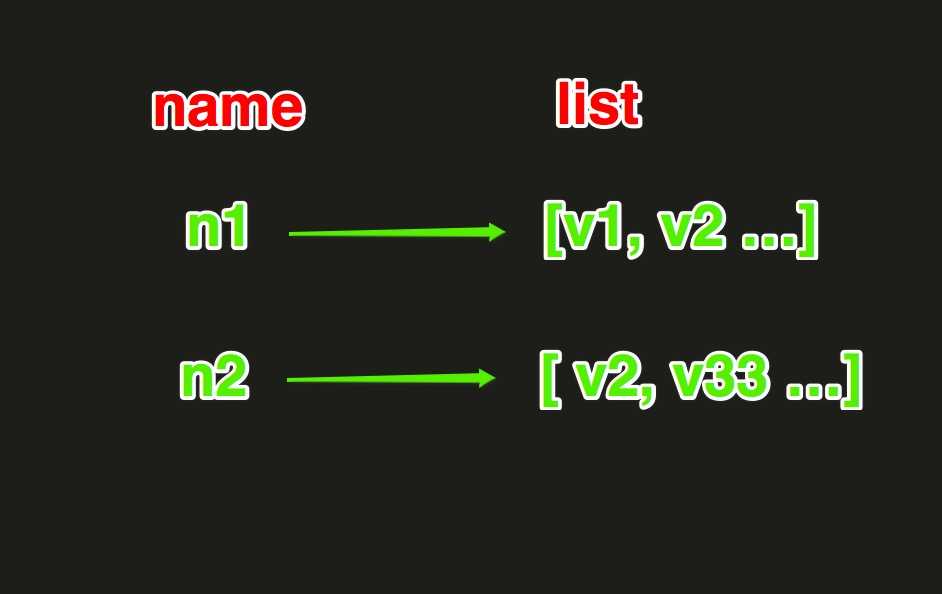
lpush(name,values)
# 在name对应的list中添加元素,每个新的元素都添加到列表的最左边# 如:# r.lpush(‘oo‘, 11,22,33)# 保存顺序为: 33,22,11# 扩展:# rpush(name, values) 表示从右向左操作lpushx(name,value)
# 在name对应的list中添加元素,只有name已经存在时,值添加到列表的最左边# 更多:# rpushx(name, value) 表示从右向左操作llen(name)
# name对应的list元素的个数linsert(name, where, refvalue, value))
# 在name对应的列表的某一个值前或后插入一个新值# 参数:# name,redis的name# where,BEFORE或AFTER# refvalue,标杆值,即:在它前后插入数据# value,要插入的数据r.lset(name, index, value)
# 对name对应的list中的某一个索引位置重新赋值# 参数:# name,redis的name# index,list的索引位置# value,要设置的值r.lrem(name, value, num)
# 在name对应的list中删除指定的值# 参数:# name,redis的name# value,要删除的值# num, num=0,删除列表中所有的指定值;# num=2,从前到后,删除2个;# num=-2,从后向前,删除2个lpop(name)
# 在name对应的列表的左侧获取第一个元素并在列表中移除,返回值则是第一个元素# 更多:# rpop(name) 表示从右向左操作lindex(name, index)
在name对应的列表中根据索引获取列表元素lrange(name, start, end)
# 在name对应的列表分片获取数据# 参数:# name,redis的name# start,索引的起始位置# end,索引结束位置ltrim(name, start, end)
# 在name对应的列表中移除没有在start-end索引之间的值# 参数:# name,redis的name# start,索引的起始位置# end,索引结束位置rpoplpush(src, dst)
# 从一个列表取出最右边的元素,同时将其添加至另一个列表的最左边# 参数:# src,要取数据的列表的name# dst,要添加数据的列表的nameblpop(keys, timeout)
# 将多个列表排列,按照从左到右去pop对应列表的元素# 参数:# keys,redis的name的集合# timeout,超时时间,当元素所有列表的元素获取完之后,阻塞等待列表内有数据的时间(秒), 0 表示永远阻塞# 更多:# r.brpop(keys, timeout),从右向左获取数据brpoplpush(src, dst, timeout=0)
# 从一个列表的右侧移除一个元素并将其添加到另一个列表的左侧# 参数:# src,取出并要移除元素的列表对应的name# dst,要插入元素的列表对应的name# timeout,当src对应的列表中没有数据时,阻塞等待其有数据的超时时间(秒),0 表示永远阻塞自定义增量迭代
# 由于redis类库中没有提供对列表元素的增量迭代,如果想要循环name对应的列表的所有元素,那么就需要:# 1、获取name对应的所有列表# 2、循环列表# 但是,如果列表非常大,那么就有可能在第一步时就将程序的内容撑爆,所有有必要自定义一个增量迭代的功能:deflist_iter(name):"""自定义redis列表增量迭代:param name: redis中的name,即:迭代name对应的列表:return: yield 返回 列表元素"""list_count=r.llen(name)forindexinxrange(list_count):yieldr.lindex(name, index)# 使用foriteminlist_iter(‘pp‘):itemSet操作,Set集合就是不允许重复的列表
sadd(name,values)
# name对应的集合中添加元素scard(name)
获取name对应的集合中元素个数sdiff(keys, *args)
在第一个name对应的集合中且不在其他name对应的集合的元素集合sdiffstore(dest, keys, *args)
# 获取第一个name对应的集合中且不在其他name对应的集合,再将其新加入到dest对应的集合中sinter(keys, *args)
# 获取多一个name对应集合的并集sinterstore(dest, keys, *args)
# 获取多一个name对应集合的并集,再讲其加入到dest对应的集合中sismember(name, value)
# 检查value是否是name对应的集合的成员smembers(name)
# 获取name对应的集合的所有成员smove(src, dst, value)
# 将某个成员从一个集合中移动到另外一个集合spop(name)
# 从集合的右侧(尾部)移除一个成员,并将其返回srandmember(name, numbers)
# 从name对应的集合中随机获取 numbers 个元素srem(name, values)
# 在name对应的集合中删除某些值sunion(keys, *args)
# 获取多一个name对应的集合的并集sunionstore(dest,keys, *args)
# 获取多一个name对应的集合的并集,并将结果保存到dest对应的集合中sscan(name, cursor=0, match=None, count=None)
sscan_iter(name, match=None, count=None)
# 同字符串的操作,用于增量迭代分批获取元素,避免内存消耗太大
有序集合,在集合的基础上,为每元素排序;元素的排序需要根据另外一个值来进行比较,所以,对于有序集合,每一个元素有两个值,即:值和分数,分数专门用来做排序。
zadd(name, *args, **kwargs)
# 在name对应的有序集合中添加元素# 如:# zadd(‘zz‘, ‘n1‘, 1, ‘n2‘, 2)# 或# zadd(‘zz‘, n1=11, n2=22)zcard(name)
# 获取name对应的有序集合元素的数量zcount(name, min, max)
# 获取name对应的有序集合中分数 在 [min,max] 之间的个数zincrby(name, value, amount)
# 自增name对应的有序集合的 name 对应的分数r.zrange( name, start, end, desc=False, withscores=False, score_cast_func=float)
# 按照索引范围获取name对应的有序集合的元素# 参数:# name,redis的name# start,有序集合索引起始位置(非分数)# end,有序集合索引结束位置(非分数)# desc,排序规则,默认按照分数从小到大排序# withscores,是否获取元素的分数,默认只获取元素的值# score_cast_func,对分数进行数据转换的函数# 更多:# 从大到小排序# zrevrange(name, start, end, withscores=False, score_cast_func=float)# 按照分数范围获取name对应的有序集合的元素# zrangebyscore(name, min, max, start=None, num=None, withscores=False, score_cast_func=float)# 从大到小排序# zrevrangebyscore(name, max, min, start=None, num=None, withscores=False, score_cast_func=float)zrank(name, value)
# 获取某个值在 name对应的有序集合中的排行(从 0 开始)# 更多:# zrevrank(name, value),从大到小排序zrangebylex(name, min, max, start=None, num=None)
# 当有序集合的所有成员都具有相同的分值时,有序集合的元素会根据成员的 值 (lexicographical ordering)来进行排序,而这个命令则可以返回给定的有序集合键 key 中, 元素的值介于 min 和 max 之间的成员# 对集合中的每个成员进行逐个字节的对比(byte-by-byte compare), 并按照从低到高的顺序, 返回排序后的集合成员。 如果两个字符串有一部分内容是相同的话, 那么命令会认为较长的字符串比较短的字符串要大# 参数:# name,redis的name# min,左区间(值)。 + 表示正无限; - 表示负无限; ( 表示开区间; [ 则表示闭区间# min,右区间(值)# start,对结果进行分片处理,索引位置# num,对结果进行分片处理,索引后面的num个元素# 如:# ZADD myzset 0 aa 0 ba 0 ca 0 da 0 ea 0 fa 0 ga# r.zrangebylex(‘myzset‘, "-", "[ca") 结果为:[‘aa‘, ‘ba‘, ‘ca‘]# 更多:# 从大到小排序# zrevrangebylex(name, max, min, start=None, num=None)zrem(name, values)
# 删除name对应的有序集合中值是values的成员# 如:zrem(‘zz‘, [‘s1‘, ‘s2‘])zremrangebyrank(name, min, max)
# 根据排行范围删除zremrangebyscore(name, min, max)
# 根据分数范围删除zremrangebylex(name, min, max)
# 根据值返回删除zscore(name, value)
# 获取name对应有序集合中 value 对应的分数zinterstore(dest, keys, aggregate=None)
# 获取两个有序集合的交集,如果遇到相同值不同分数,则按照aggregate进行操作# aggregate的值为: SUM MIN MAXzunionstore(dest, keys, aggregate=None)
# 获取两个有序集合的并集,如果遇到相同值不同分数,则按照aggregate进行操作# aggregate的值为: SUM MIN MAXzscan(name, cursor=0, match=None, count=None, score_cast_func=float)
zscan_iter(name, match=None, count=None,score_cast_func=float)
# 同字符串相似,相较于字符串新增score_cast_func,用来对分数进行操作
其他常用操作
delete(*names)
# 根据删除redis中的任意数据类型exists(name)
# 检测redis的name是否存在keys(pattern=‘*‘)
# 根据模型获取redis的name# 更多:# KEYS * 匹配数据库中所有 key 。# KEYS h?llo 匹配 hello , hallo 和 hxllo 等。# KEYS h*llo 匹配 hllo 和 heeeeello 等。# KEYS h[ae]llo 匹配 hello 和 hallo ,但不匹配 hilloexpire(name ,time)
# 为某个redis的某个name设置超时时间rename(src, dst)
# 对redis的name重命名为move(name, db))
# 将redis的某个值移动到指定的db下randomkey()
# 随机获取一个redis的name(不删除)type(name)
# 获取name对应值的类型scan(cursor=0, match=None, count=None)
scan_iter(match=None, count=None)
# 同字符串操作,用于增量迭代获取key
4、管道
redis-py默认在执行每次请求都会创建(连接池申请连接)和断开(归还连接池)一次连接操作,如果想要在一次请求中指定多个命令,则可以使用pipline实现一次请求指定多个命令,并且默认情况下一次pipline 是原子性操作。
|
1
2
3
4
5
6
7
8
9
10
11
12
13
14
15
16
|
#!/usr/bin/env python# -*- coding:utf-8 -*-import redispool = redis.ConnectionPool(host=‘10.211.55.4‘, port=6379)r = redis.Redis(connection_pool=pool)# pipe = r.pipeline(transaction=False)pipe = r.pipeline(transaction=True)r.set(‘name‘, ‘alex‘)r.set(‘role‘, ‘sb‘)pipe.execute() |
5、发布订阅
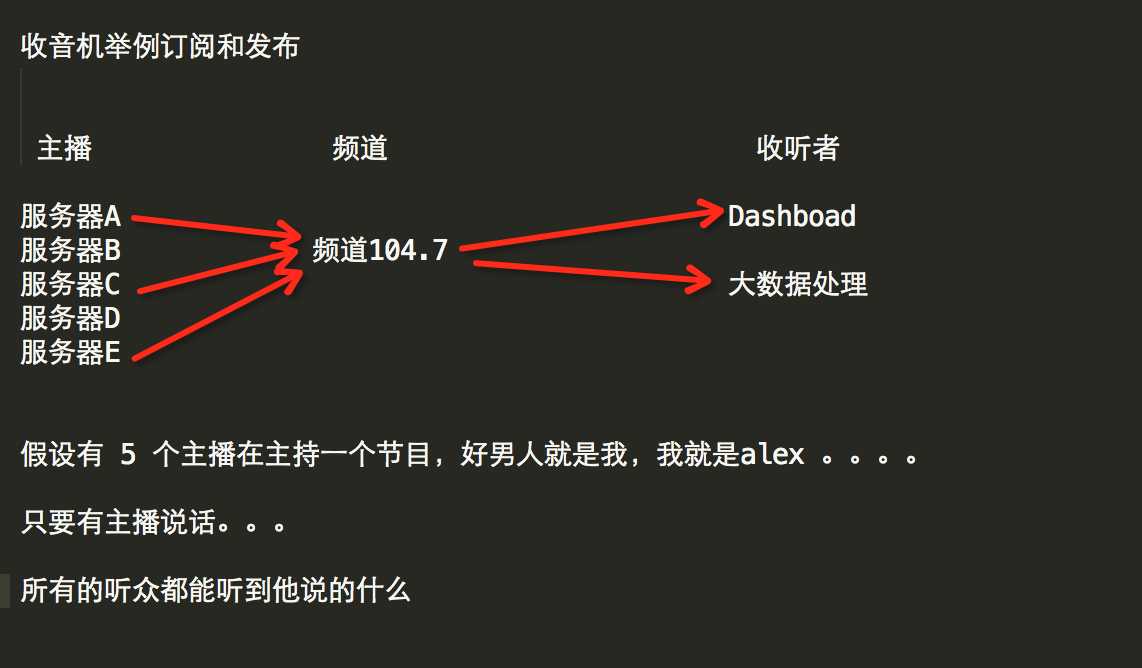
发布者:服务器
订阅者:Dashboad和数据处理
Demo如下:
 RedisHelper
RedisHelper订阅者:
|
1
2
3
4
5
6
7
8
9
10
11
|
#!/usr/bin/env python# -*- coding:utf-8 -*-from monitor.RedisHelper import RedisHelperobj = RedisHelper()redis_sub = obj.subscribe()while True: msg= redis_sub.parse_response() print msg |
发布者:
安装python rabbitMQ module
|
1
2
3
4
5
6
7
|
pip install pikaoreasy_install pikaor源码 https://pypi.python.org/pypi/pika |
实现最简单的队列通信
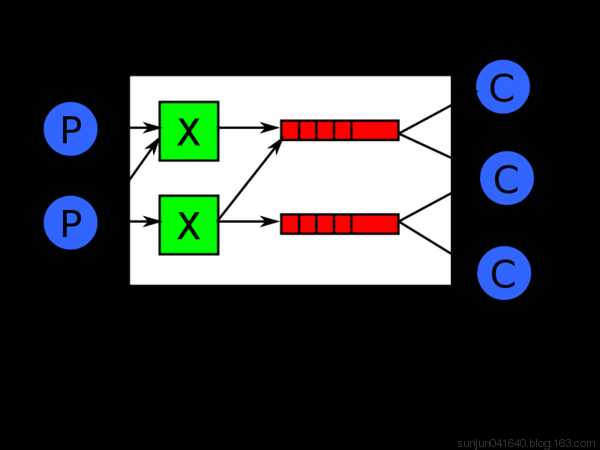
send端
|
1
2
3
4
5
6
7
8
9
10
11
12
13
14
15
16
|
#!/usr/bin/env pythonimport pikaconnection = pika.BlockingConnection(pika.ConnectionParameters( ‘localhost‘))channel = connection.channel()#声明queuechannel.queue_declare(queue=‘hello‘)#n RabbitMQ a message can never be sent directly to the queue, it always needs to go through an exchange.channel.basic_publish(exchange=‘‘, routing_key=‘hello‘, body=‘Hello World!‘)print(" [x] Sent ‘Hello World!‘")connection.close() |
receive端
|
1
2
3
4
5
6
7
8
9
10
11
12
13
14
15
16
17
18
19
20
21
22
23
24
|
#_*_coding:utf-8_*___author__ = ‘Alex Li‘import pikaconnection = pika.BlockingConnection(pika.ConnectionParameters( ‘localhost‘))channel = connection.channel()#You may ask why we declare the queue again ? we have already declared it in our previous code.# We could avoid that if we were sure that the queue already exists. For example if send.py program#was run before. But we‘re not yet sure which program to run first. In such cases it‘s a good# practice to repeat declaring the queue in both programs.channel.queue_declare(queue=‘hello‘)def callback(ch, method, properties, body): print(" [x] Received %r" % body)channel.basic_consume(callback, queue=‘hello‘, no_ack=True)print(‘ [*] Waiting for messages. To exit press CTRL+C‘)channel.start_consuming() |
在这种模式下,RabbitMQ会默认把p发的消息依次分发给各个消费者(c),跟负载均衡差不多
消息提供者代码
|
1
2
3
4
5
6
7
8
9
10
11
12
13
14
15
16
17
18
19
20
21
|
import pikaconnection = pika.BlockingConnection(pika.ConnectionParameters( ‘localhost‘))channel = connection.channel()#声明queuechannel.queue_declare(queue=‘task_queue‘)#n RabbitMQ a message can never be sent directly to the queue, it always needs to go through an exchange.import sysmessage = ‘ ‘.join(sys.argv[1:]) or "Hello World!"channel.basic_publish(exchange=‘‘, routing_key=‘task_queue‘, body=message, properties=pika.BasicProperties( delivery_mode = 2, # make message persistent ))print(" [x] Sent %r" % message)connection.close() |
消费者代码
|
1
2
3
4
5
6
7
8
9
10
11
12
13
14
15
16
17
18
19
20
21
|
import pika,timeconnection = pika.BlockingConnection(pika.ConnectionParameters( ‘localhost‘))channel = connection.channel()def callback(ch, method, properties, body): print(" [x] Received %r" % body) time.sleep(body.count(b‘.‘)) print(" [x] Done") ch.basic_ack(delivery_tag = method.delivery_tag)channel.basic_consume(callback, queue=‘task_queue‘, )print(‘ [*] Waiting for messages. To exit press CTRL+C‘)channel.start_consuming() |
此时,先启动消息生产者,然后再分别启动3个消费者,通过生产者多发送几条消息,你会发现,这几条消息会被依次分配到各个消费者身上
Doing a task can take a few seconds. You may wonder what happens if one of the consumers starts a long task and dies with it only partly done. With our current code once RabbitMQ delivers message to the customer it immediately removes it from memory. In this case, if you kill a worker we will lose the message it was just processing. We‘ll also lose all the messages that were dispatched to this particular worker but were not yet handled.
But we don‘t want to lose any tasks. If a worker dies, we‘d like the task to be delivered to another worker.
In order to make sure a message is never lost, RabbitMQ supports message acknowledgments. An ack(nowledgement) is sent back from the consumer to tell RabbitMQ that a particular message had been received, processed and that RabbitMQ is free to delete it.
If a consumer dies (its channel is closed, connection is closed, or TCP connection is lost) without sending an ack, RabbitMQ will understand that a message wasn‘t processed fully and will re-queue it. If there are other consumers online at the same time, it will then quickly redeliver it to another consumer. That way you can be sure that no message is lost, even if the workers occasionally die.
There aren‘t any message timeouts; RabbitMQ will redeliver the message when the consumer dies. It‘s fine even if processing a message takes a very, very long time.
Message acknowledgments are turned on by default. In previous examples we explicitly turned them off via the no_ack=True flag. It‘s time to remove this flag and send a proper acknowledgment from the worker, once we‘re done with a task.
|
1
2
3
4
5
6
7
8
|
def callback(ch, method, properties, body): print " [x] Received %r" % (body,) time.sleep( body.count(‘.‘) ) print " [x] Done" ch.basic_ack(delivery_tag = method.delivery_tag)channel.basic_consume(callback, queue=‘hello‘) |
Using this code we can be sure that even if you kill a worker using CTRL+C while it was processing a message, nothing will be lost. Soon after the worker dies all unacknowledged messages will be redelivered
We have learned how to make sure that even if the consumer dies, the task isn‘t lost(by default, if wanna disable use no_ack=True). But our tasks will still be lost if RabbitMQ server stops.
When RabbitMQ quits or crashes it will forget the queues and messages unless you tell it not to. Two things are required to make sure that messages aren‘t lost: we need to mark both the queue and messages as durable.
First, we need to make sure that RabbitMQ will never lose our queue. In order to do so, we need to declare it as durable:
|
1
|
channel.queue_declare(queue=‘hello‘, durable=True) |
Although this command is correct by itself, it won‘t work in our setup. That‘s because we‘ve already defined a queue called hello which is not durable. RabbitMQ doesn‘t allow you to redefine an existing queue with different parameters and will return an error to any program that tries to do that. But there is a quick workaround - let‘s declare a queue with different name, for exampletask_queue:
|
1
|
channel.queue_declare(queue=‘task_queue‘, durable=True) |
This queue_declare change needs to be applied to both the producer and consumer code.
At that point we‘re sure that the task_queue queue won‘t be lost even if RabbitMQ restarts. Now we need to mark our messages as persistent - by supplying a delivery_mode property with a value 2.
|
1
2
3
4
5
6
|
channel.basic_publish(exchange=‘‘, routing_key="task_queue", body=message, properties=pika.BasicProperties( delivery_mode = 2, # make message persistent )) |
如果Rabbit只管按顺序把消息发到各个消费者身上,不考虑消费者负载的话,很可能出现,一个机器配置不高的消费者那里堆积了很多消息处理不完,同时配置高的消费者却一直很轻松。为解决此问题,可以在各个消费者端,配置perfetch=1,意思就是告诉RabbitMQ在我这个消费者当前消息还没处理完的时候就不要再给我发新消息了。
|
1
|
channel.basic_qos(prefetch_count=1) |
带消息持久化+公平分发的完整代码
生产者端
|
1
2
3
4
5
6
7
8
9
10
11
12
13
14
15
16
17
18
19
|
#!/usr/bin/env pythonimport pikaimport sysconnection = pika.BlockingConnection(pika.ConnectionParameters( host=‘localhost‘))channel = connection.channel()channel.queue_declare(queue=‘task_queue‘, durable=True)message = ‘ ‘.join(sys.argv[1:]) or "Hello World!"channel.basic_publish(exchange=‘‘, routing_key=‘task_queue‘, body=message, properties=pika.BasicProperties( delivery_mode = 2, # make message persistent ))print(" [x] Sent %r" % message)connection.close() |
消费者端
|
1
2
3
4
5
6
7
8
9
10
11
12
13
14
15
16
17
18
19
20
21
22
|
#!/usr/bin/env pythonimport pikaimport timeconnection = pika.BlockingConnection(pika.ConnectionParameters( host=‘localhost‘))channel = connection.channel()channel.queue_declare(queue=‘task_queue‘, durable=True)print(‘ [*] Waiting for messages. To exit press CTRL+C‘)def callback(ch, method, properties, body): print(" [x] Received %r" % body) time.sleep(body.count(b‘.‘)) print(" [x] Done") ch.basic_ack(delivery_tag = method.delivery_tag)channel.basic_qos(prefetch_count=1)channel.basic_consume(callback, queue=‘task_queue‘)channel.start_consuming() |
之前的例子都基本都是1对1的消息发送和接收,即消息只能发送到指定的queue里,但有些时候你想让你的消息被所有的Queue收到,类似广播的效果,这时候就要用到exchange了,
An exchange is a very simple thing. On one side it receives messages from producers and the other side it pushes them to queues. The exchange must know exactly what to do with a message it receives. Should it be appended to a particular queue? Should it be appended to many queues? Or should it get discarded. The rules for that are defined by the exchange type.
Exchange在定义的时候是有类型的,以决定到底是哪些Queue符合条件,可以接收消息
fanout: 所有bind到此exchange的queue都可以接收消息
direct: 通过routingKey和exchange决定的那个唯一的queue可以接收消息
topic:所有符合routingKey(此时可以是一个表达式)的routingKey所bind的queue可以接收消息
表达式符号说明:#代表一个或多个字符,*代表任何字符
例:#.a会匹配a.a,aa.a,aaa.a等
*.a会匹配a.a,b.a,c.a等
注:使用RoutingKey为#,Exchange Type为topic的时候相当于使用fanout
headers: 通过headers 来决定把消息发给哪些queue
消息publisher
|
1
2
3
4
5
6
7
8
9
10
11
12
13
14
15
16
|
import pikaimport sysconnection = pika.BlockingConnection(pika.ConnectionParameters( host=‘localhost‘))channel = connection.channel()channel.exchange_declare(exchange=‘logs‘, type=‘fanout‘)message = ‘ ‘.join(sys.argv[1:]) or "info: Hello World!"channel.basic_publish(exchange=‘logs‘, routing_key=‘‘, body=message)print(" [x] Sent %r" % message)connection.close() |
消息subscriber
|
1
2
3
4
5
6
7
8
9
10
11
12
13
14
15
16
17
18
19
20
21
22
23
24
25
26
27
|
#_*_coding:utf-8_*___author__ = ‘Alex Li‘import pikaconnection = pika.BlockingConnection(pika.ConnectionParameters( host=‘localhost‘))channel = connection.channel()channel.exchange_declare(exchange=‘logs‘, type=‘fanout‘)result = channel.queue_declare(exclusive=True) #不指定queue名字,rabbit会随机分配一个名字,exclusive=True会在使用此queue的消费者断开后,自动将queue删除queue_name = result.method.queuechannel.queue_bind(exchange=‘logs‘, queue=queue_name)print(‘ [*] Waiting for logs. To exit press CTRL+C‘)def callback(ch, method, properties, body): print(" [x] %r" % body)channel.basic_consume(callback, queue=queue_name, no_ack=True)channel.start_consuming() |
RabbitMQ还支持根据关键字发送,即:队列绑定关键字,发送者将数据根据关键字发送到消息exchange,exchange根据 关键字 判定应该将数据发送至指定队列。
Although using the direct exchange improved our system, it still has limitations - it can‘t do routing based on multiple criteria.
In our logging system we might want to subscribe to not only logs based on severity, but also based on the source which emitted the log. You might know this concept from the syslog unix tool, which routes logs based on both severity (info/warn/crit...) and facility (auth/cron/kern...).
That would give us a lot of flexibility - we may want to listen to just critical errors coming from ‘cron‘ but also all logs from ‘kern‘.
publisher
subscriber
To receive all the logs run:
python receive_logs_topic.py "#"
To receive all logs from the facility "kern":
python receive_logs_topic.py "kern.*"
Or if you want to hear only about "critical" logs:
python receive_logs_topic.py "*.critical"
You can create multiple bindings:
python receive_logs_topic.py "kern.*" "*.critical"
And to emit a log with a routing key "kern.critical" type:
python emit_log_topic.py "kern.critical" "A critical kernel error"
To illustrate how an RPC service could be used we‘re going to create a simple client class. It‘s going to expose a method named call which sends an RPC request and blocks until the answer is received:
|
1
2
3
|
fibonacci_rpc = FibonacciRpcClient()result = fibonacci_rpc.call(4)print("fib(4) is %r" % result) |
RPC server
RPC client
标签:
原文地址:http://www.cnblogs.com/Sit-on-the-fence/p/5983023.html